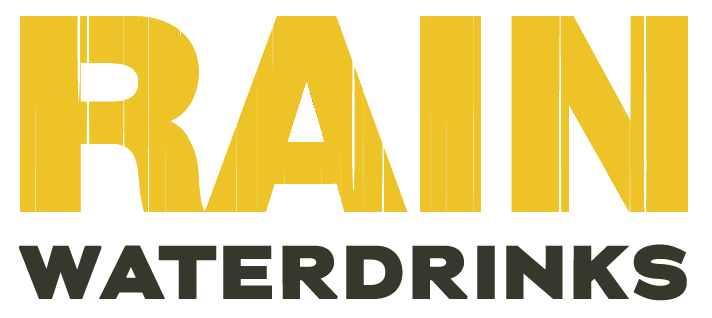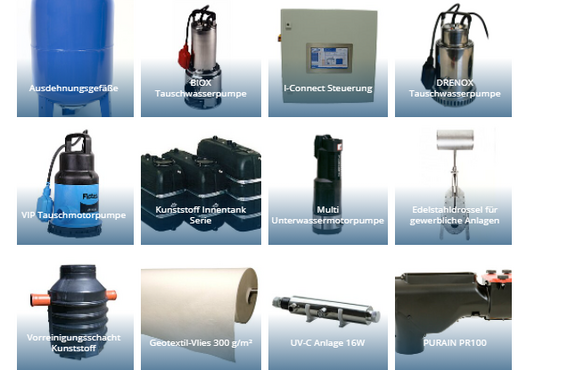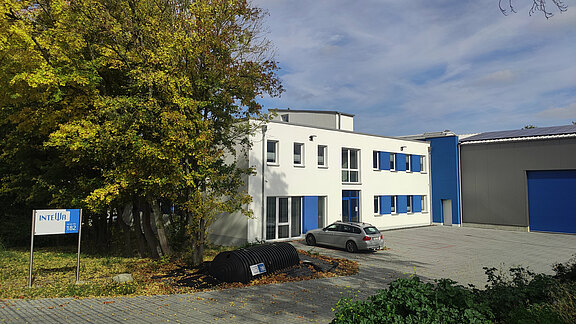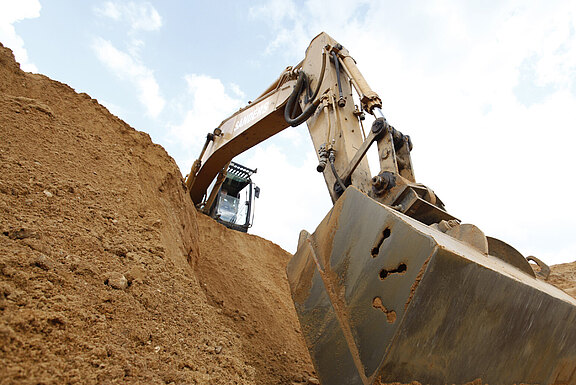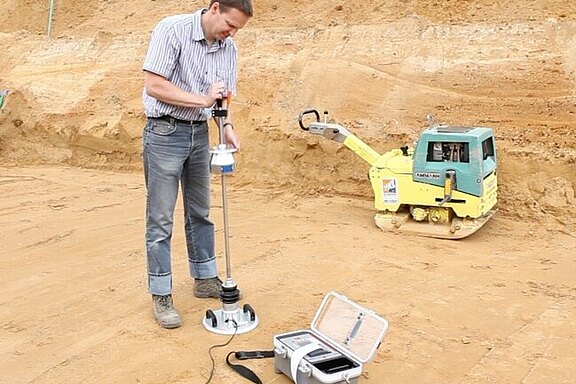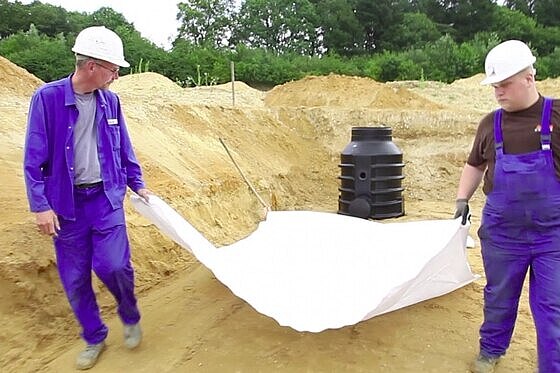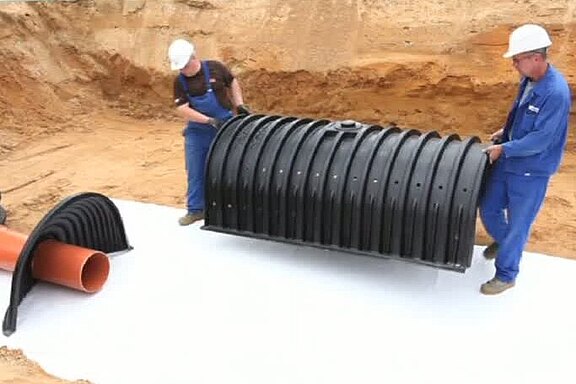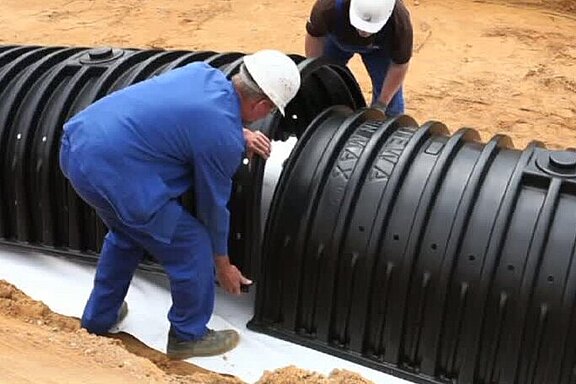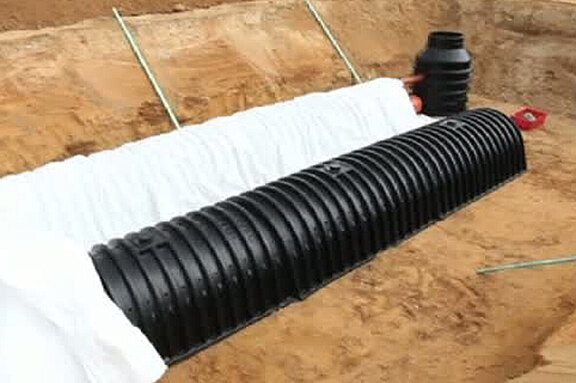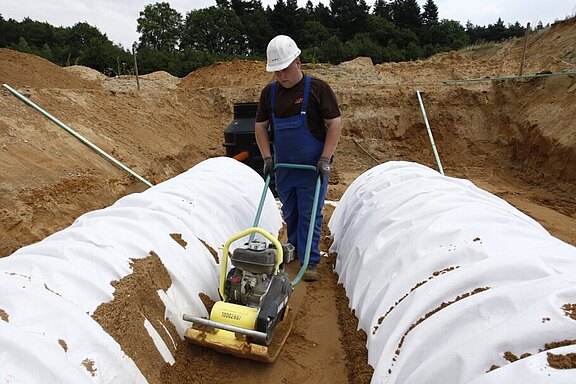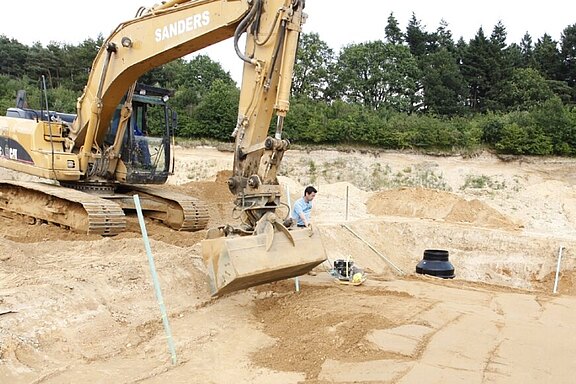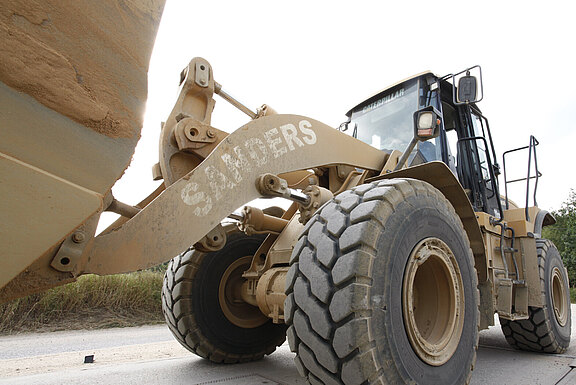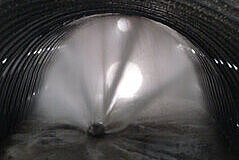Excavation and planning
Creation of a horizontal, level and load-bearing subgrade. For infiltration applications, the permeability of the compacted subsoil must be at least equal to the permeability specified in the plan. A geotextile separation layer will be installed in the subgrade and on the excavation slope. The geocomposite is laid out under the flushing tunnel row.
Laying the tunnel elements and making the pipe connections
Before the tunnel is installed, the inflow and inspection manholes must be fitted according to the required position and height, and the tunnel inflow areas are protected with a geotextile layer.
- The DRAINMAX elements are installed in rows on the prepared ground.
- The first tunnel is installed with the inflow slot end facing the incoming pipe.The elements are connected together by overlapping. The end cap closes the tunnel. Then the next row is laid parallel to the first, at the specified distance.
- Then the tunnel rows are covered with geotextile
- Soil is placed around the tunnels to fix the geotextile in place
Lateral backfilling of the tunnel elements
Backfill the sides and top of the tunnel elements with suitable backfill material in uniform layers on both sides.
Even compaction of the backfill layers on all sides, starting with light compaction equipment. With increasing height, heavy compaction equipment can be used.
When the tunnel elements are backfilled, the load-bearing capacity for the subsequent traffic surface is established.
- The backfill material with mixed grading curve is compacted in layers over the tunnel shoulder until the required load-bearing capacity is achieved.
- If 16/32 mm crushed stone is used, this is backfilled to 10 cm above the tunnel shoulder and covered with a geotextile separating layer. Non-cohesive soil material is further backfilled and compacted in layers until the required load-bearing capacity of 45 kN/m² is achieved.
- Finally, the superstructure for the traffic area is constructed according to plan.
Cleaning and maintenance - rinsable floor
Should dirt get into the DRAINMAX tunnel infiltration trench despite pre-cleaning, it is probably the only plastic infiltration trench where the walls and floors, which are decisive for the infiltration performance, can also be completely cleaned later. With conventional infiltration trenches, usually only the flushing channels can be cleaned later. However, the fine dirt particles pass through the slots of the flushing channels and then gradually clog the bottoms and walls of such infiltration trenches. Ultimately, these can only be completely excavated when they have lost their infiltration capacity. With the DRAINMAX tunnel trench, the critical walls and soils can be completely flushed out via corresponding connection shafts. Thus, only the DRAINMAX tunnel trench guarantees a constant infiltration performance in the long run.

